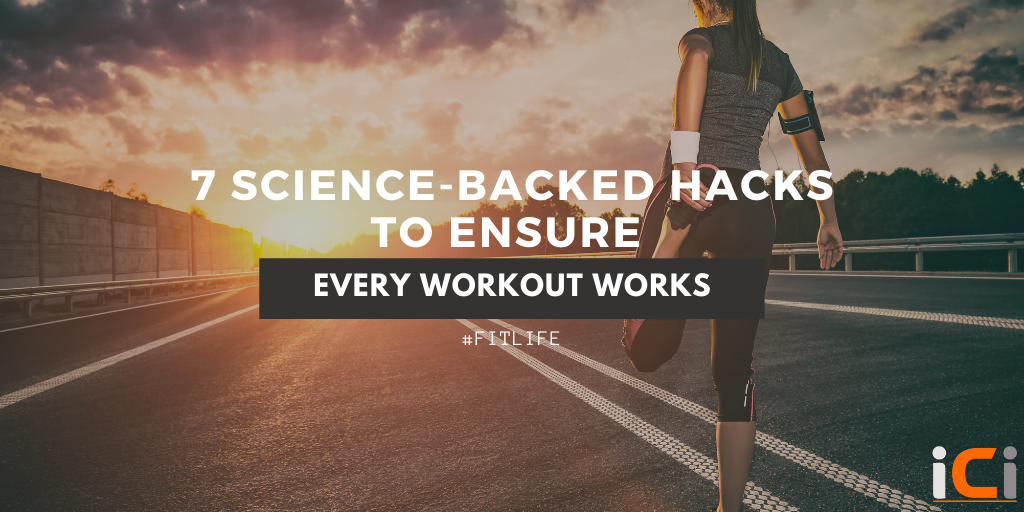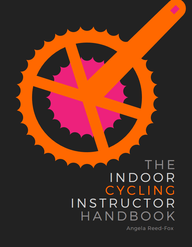7 Science-Backed Hacks to Ensure Every Workout Worksby Angela Reed-Fox Getting the fitness results doesn’t have to be tricky — but if you use a scattergun approach, those results will be sporadic at best. Fitness is like cake (yes it is!) and if you follow the recipe, you’ll get results. It is important to remember that everyone is different, and everyone responds differently to different workouts. My lighter frame and relatively slow metabolism mean I won’t burn as many calories in an indoor cycling session as many would. However, if you find activities you enjoy, then the process becomes fun — and when it’s fun, you’re more likely to stick to it and get what you want from it. I train indoor cycling instructors, and when teaching them how to design sessions, these are the principles that I go over with them. If riders come to a class, they’re coming because they want results, a badly designed class that omits some of these principles just shortchanges them. Let’s get started. 1. Goal and time You should always have a goal. ‘I’m going to go to the gym three times a week’ is not a goal. That’s a resolution — and do you know how many resolutions fail? No, neither do I, but I know it’s nearly all of them! A goal is something you want to achieve. Something you work towards. A goal is positive, a resolution is negative. With a goal, you know when you’ve reached it, with a resolution you never reach it; you only know when you’ve failed — when you skip that gym workout, and then the danger is you feel like a failure and that makes it difficult to continue. Set a goal instead, and then set a time you want to achieve it in. This will help to keep your focus. 2. Specificity This is the principle that obviously your workout has to match your ultimate goal. If you want weight loss, then good quality indoor cycling is difficult to beat. If you want to run marathons, you’ll want endurance training. What you do has to be specific to your goal (and that goes for life too!) 3. Length (or repetition) and intensity Repetition is how many times you do it, and intensity is how hard it is to do. Let’s compare a sprinter and a long-distance cyclist; a sprinter will benefit most at targeting very high intensity short intervals, and a long-distance rider will want to target longer, lower intensity intervals. This is because the two riders are targeting different muscle fibre types and different energy systems. I’ll not go too complex, but do you see that although they’re both riding bikes, they have different goals, and therefore will need to train differently to achieve them? This is where a good instructor or coach comes in — ask about what’s best for your own goals. 4. Progression Always make sure that within your workout, and from one workout to another, you’re making the challenge a bit harder each time. Once you’ve achieved one type of exercise you found difficult to do before, make it harder. For example, once you can do a simple pushup, make it harder — move your hands closer together, or cross your legs; when you can do this progression, make it harder again — use one hand, or raise your feet on a step. Every time we push ourselves a little harder, our comfort zone increases, so we need to consciously make the decision to keep stepping outside it. 5. Adaptation This is what you’re looking for and it happens as a result of your workout. You get stronger, fitter, leaner. Adaptation is your body’s response to what you’ve done in your workouts. Adaptation is achieving your goals — being able to lift that target weight, being able to fit into those pants, being able to qualify for that event. But not only in your workouts; your body also needs the next principle in order to achieve this. This principle is the one most often missed or sidelined. 6. Recovery — fuel and rest You want to achieve your goals, you want your body to adapt. It needs three main things to do this:
I advised two things:
But actually, that’s nice — moderation is good. Life is designed to benefit from moderation. Enjoy your workout, enjoy your rest, and enjoy food. Food is the other thing. Food and hydration. Make sure you’re always well hydrated. This will mean not only your workouts will be more successful, you won’t get so many headaches, and you’ll find the results you want come quicker. Make sure you’re fueling properly. You don’t need to go overboard with nutrition, but just know that starving yourself after a workout isn’t good. Having healthy eating habits is something to work on. Aim for at least five portions a day of fruit and veg. Eat less refined food, but don’t cut anything out that you like. Life is for living after all. I don’t go in for processed protein shakes or sports drinks — I just make sure I’m well hydrated every day, and after my workout I might have a yogurt or a banana milkshake, or my next meal if it’s time for that. And after that? Well, after I’ve had my post workout snack, I put my feet up on the sofa and enjoy that wonderful tired legs feeling of a workout well done. 7. Reversibility I almost don’t want to add this at the end, but if you apply the above principles you won’t get hit with the reversibility stick. This is the ‘use it or lose it’ principle. If I delay my next workout a couple of weeks, if I don’t put the same effort in, I’ll start seeing a backwards change as my body reverses the changes it made. I’ll start putting on weight, my muscle mass will deteriorate — because I’m not using it. The key with reversibility is, it’s a thing. It’s going to happen and there’s nothing you can do about that, except keep it at bay. Have your goal, and once you’ve achieved your goal, you then need to enter your maintenance phase, and that will stop reversibility happening. So there we have it — you can really up the quality and effectiveness of your workouts — but don’t forget what you do either side of those; rest, hydrate, eat food, and then do it all again! I’m sending you achieving-your-goal vibes. You’ve got this.
0 Comments
Leave a Reply. |
Categories
All
|
Quick links
Get started
|
Find what's right for you
|
Courses
|
Further learning
|
More
|
The Indoor Cycling Institute provides the most comprehensive and up to date indoor cycling instructor training; providing entry-level courses, and further education to raise the standard of instructors.
© 2014-2024 Protheorem Ltd
The Indoor Cycling Institute is owned and operated by Protheorem Ltd Registered in England & Wales, Company number 12812092
The Indoor Cycling Institute is owned and operated by Protheorem Ltd Registered in England & Wales, Company number 12812092




